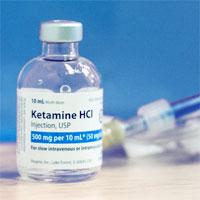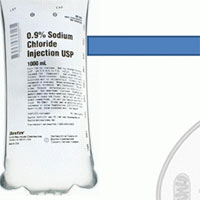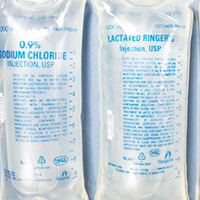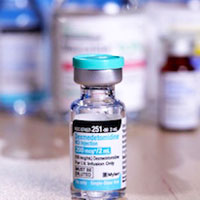Tag: infusion

A Multicentre Randomised Controlled Trial of Levetiracetam vs. Phenytoin for Convulsive Status Epilepticus in Children
Convulsive status epilepticus (CSE) is the most common life-threatening childhood neurological emergency. Despite this, there is a lack of high quality evidence supporting medication use after first line benzodiazepines,... read more

Ketamine Continuous Infusion: A Reasonable Alternative to Traditional Sedatives and Analgesics?
Propofol, dexmedetomidine, and opioids are commonly used for patients requiring continuous sedation or analgesia, such as for those receiving mechanical ventilation. Although these medications are generally safe, some may... read more

Caffeine Accelerates Emergence from Isoflurane Anesthesia in Humans
Intravenous caffeine is able to accelerate emergence from isoflurane anesthesia in healthy males without any apparent adverse effects. All randomized participants were included in the analysis. The mean time to emergence... read more

Hemodynamic Tolerance to IV Clonidine Infusion in the PICU
Although administration of clonidine is often associated with bradycardia and hypotension, these complications do not seem clinically significant in a mixed PICU population with a high degree of disease severity. Clonidine... read more

Practice Change From Intermittent Medication Boluses to Bolusing From a Continuous Infusion in Pediatric Critical Care
Implementation of bolus medications from continuous infusion in PICUs significantly decreased time to begin a bolus dose and increased nursing satisfaction. The practice change also improved medication utilization without... read more

Nine Reasons to Quit Using Normal Saline for Resuscitation
Saline vs. balanced solutions has been a topic of ongoing debate. Two fresh studies will illuminate this: the SMART and SALT-ED trials. This post summarizes current knowledge, beginning with physiology and working our way... read more

Tomorrow’s ICU
Johns Hopkins clinicians and engineers are creating a model for a safer, less costly and more productive clinical unit that can be adopted anywhere. With clinicians spending less time on documenting and gathering supplies,... read more

Sodium Lactate Improves Hemodynamics
Sodium lactate has been shown to improve hemodynamics and avoid fluid overload. The objective of this study was to confirm a beneficial effect on fluid balance with sodium lactate infusion and to specify whether the advantage... read more

A supplemental intravenous amino acid infusion sustains a positive protein balance for 24 hours in critically ill patients
Providing supplemental amino acids to ICU patients during a 3-h period results in improved whole-body net protein balance, without an increase in amino acid oxidation. The primary objective was to investigate if a 24-h intravenous... read more

Adverse Effects of Crystalloid and Colloid Fluids
Volume therapy can be managed according to the fluid balance method, the outcome-guided method, or the goal-directed method. One reason why fluid is needed is that anesthesia disrupts the normal autonomic control of the circulation,... read more

A comparison of two insulin infusion protocols in the ICU by continuous glucose monitoring
The Yale protocol provided better average glycemia, more time spent in normoglycemia, less time in hypoglycemia, and less glycemic variability than the Leuven protocol, but was not independently associated with strict glycemic... read more

Intraoperative Infusion of Dexmedetomidine for Prevention of Postoperative Delirium and Cognitive Dysfunction in Elderly Patients
Intraoperative infusion of dexmedetomidine for prevention of postoperative delirium and cognitive dysfunction in elderly patients undergoing major elective non-cardiac surgery. Postoperative delirium occurs in 10% to 60%... read more

Use of ‘tidal volume challenge’ to improve the reliability of pulse pressure variation
Fluid loading is usually the first step in the resuscitation of patients with acute circulatory failure. Fluid responsiveness is defined as the ability of the left ventricle to increase its stroke volume in response to fluid... read more

Effects of Neuromuscular Blockers on Transpulmonary Pressures in Moderate to Severe ARDS
Thirty patients were included, 24 with moderate ARDS and 6 with severe ARDS. NMBA infusion was associated with an improvement in oxygenation in both moderate and severe ARDS, accompanied by a decrease in both plateau pressure... read more








